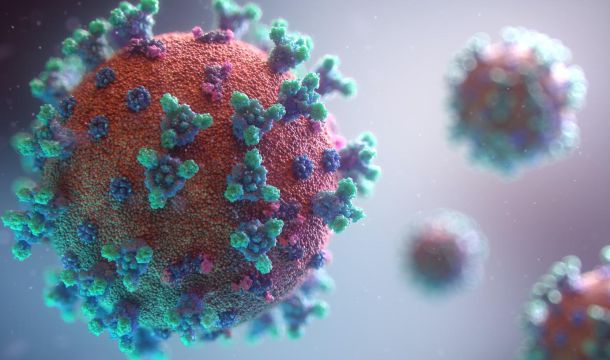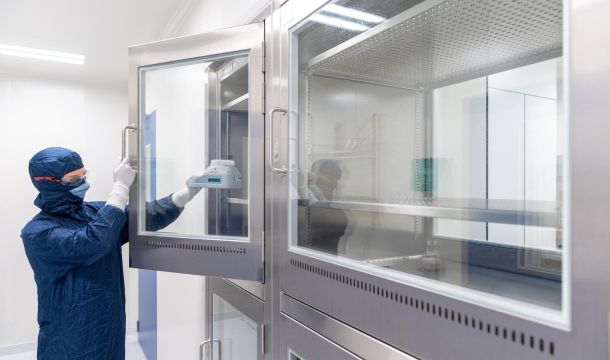The Occupational Safety and Health Administration (OSHA) is the federal agency tasked with the protection of worker health and safety, so it is not surprising that OSHA has issued some comprehensive Guidance on Preparing Workplaces for COVID-19. This Guidance addresses how COVID-19 is spread and describes steps employers can take to reduce workers’ risk of exposure to the virus, such as the following:
Prepare to Implement Basic Infection Prevention Measures
For most employers, protecting workers will depend on emphasizing basic infection prevention measures. As appropriate, all employers should implement good hygiene and infection control practices, including:
- Promote frequent and thorough hand washing, including by providing workers, customers, and worksite visitors with a place to wash their hands. If soap and running water are not immediately available, provide alcohol-based hand rubs containing at least 60% alcohol.
- Encourage workers to stay home if they are sick.
- Encourage respiratory etiquette, including covering coughs and sneezes.
- Provide customers and the public with tissues and trash receptacles.
- Employers should explore whether they can establish policies and practices, such as flexible worksites (e.g., telecommuting) and flexible work hours (e.g., staggered shifts), to increase the physical distance among employees and between employees and others if state and local health authorities recommend the use of social distancing strategies.
- Discourage workers from using other workers’ phones, desks, offices, or other work tools and equipment, when possible.
- Maintain regular housekeeping practices, including routine cleaning and disinfecting of surfaces, equipment, and other elements of the work environment. When choosing cleaning chemicals, employers should consult information on Environmental Protection Agency (EPA)-approved disinfectant labels with claims against emerging viral pathogens. Products with EPA-approved emerging viral pathogens claims are expected to be effective against SARS-CoV-2 based on data for harder to kill viruses. Follow the manufacturer’s instructions for use of all cleaning and disinfection products (e.g., concentration, application method and contact time, PPE).
Develop Policies and Procedures for Prompt Identification and Isolation of Sick People, if Appropriate
- Prompt identification and isolation of potentially infectious individuals is a critical step in protecting workers, customers, visitors, and others at a worksite.
- Employers should inform and encourage employees to self-monitor for signs and symptoms of COVID-19 if they suspect possible exposure.
- Employers should develop policies and procedures for employees to report when they are sick or experiencing symptoms of COVID-19.
- Where appropriate, employers should develop policies and procedures for immediately isolating people who have signs and/or symptoms of COVID-19, and train workers to implement them. Move potentially infectious people to a location away from workers, customers, and other visitors. Although most worksites do not have specific isolation rooms, designated areas with closable doors may serve as isolation rooms until potentially sick people can be removed from the worksite.
- Take steps to limit spread of the respiratory secretions of a person who may have COVID-19. Provide a face mask, if feasible and available, and ask the person to wear it, if tolerated. Note: A face mask (also called a surgical mask, procedure mask, or other similar terms) on a patient or other sick person should not be confused with PPE for a worker; the mask acts to contain potentially infectious respiratory secretions at the source (i.e., the person’s nose and mouth).
- If possible, isolate people suspected of having COVID-19 separately from those with confirmed cases of the virus to prevent further transmission—particularly in worksites where medical screening, triage, or healthcare activities occur, using either permanent (e.g., wall/different room) or temporary barrier (e.g., plastic sheeting).
- Restrict the number of personnel entering isolation areas.
- Protect workers in close contact with (i.e., within 6 feet of) a sick person or who have prolonged/repeated contact with such persons by using additional engineering and administrative controls, safe work practices, and PPE. Workers whose activities involve close or prolonged/ repeated contact with sick people are addressed further in later sections covering workplaces classified at medium and very high or high exposure risk. GUIDANCE ON PREPARING WORKPLACES FOR COVID-19 1 1 Develop, Implement, and Communicate about Workplace Flexibilities and Protections.
- Actively encourage sick employees to stay home.
- Ensure that sick leave policies are flexible and consistent with public health guidance and that employees are aware of these policies.
- Talk with companies that provide your business with contract or temporary employees about the importance of sick employees staying home and encourage them to develop non-punitive leave policies.
- Do not require a healthcare provider’s note for employees who are sick with acute respiratory illness to validate their illness or to return to work, as healthcare provider offices and medical facilities may be extremely busy and not able to provide such documentation in a timely way.
- Maintain flexible policies that permit employees to stay home to care for a sick family member. Employers should be aware that more employees may need to stay at home to care for sick children or other sick family members than is usual.
- Recognize that workers with ill family members may need to stay home to care for them. See CDC’s Interim Guidance for Preventing the Spread of COVID-19 in Homes and Residential Communities: www.cdc.gov/coronavirus/2019- ncov/hcp/guidance-prevent-spread.html.
- Be aware of workers’ concerns about pay, leave, safety, health, and other issues that may arise during infectious disease outbreaks. Provide adequate, usable, and appropriate training, education, and informational material about business-essential job functions and worker health and safety, including proper hygiene practices and the use of any workplace controls (including PPE). Informed workers who feel safe at work are less likely to be unnecessarily absent.
- Work with insurance companies (e.g., those providing employee health benefits) and state and local health agencies to provide information to workers and customers about medical care in the event of a COVID-19 outbreak.
- Furthermore, to help employers determine appropriate precautions, OSHA has divided job tasks into four risk exposure levels: very high, high, medium, and lower risk. The types of recommended precautions will vary based upon the exposure level. The very high and high exposure levels generally apply to workers in various healthcare fields. Most workers at high or very high exposure risk likely need to wear gloves, a gown, a face shield or goggles, and either a face mask or a respirator, depending on their job tasks and exposure risks. Medium exposure risk jobs include those that require frequent and/or close contact with (i.e., within 6 feet of) people who may be infected with SARS-CoV-2, but who are not known or suspected COVID-19 patients. Lower exposure risk (caution) jobs are those that do not require contact with people known to be, or suspected of being, infected with SARS-CoV-2 nor frequent close contact with (i.e., within 6 feet of) the general public.
- Overall, OSHA’s Guidance is a useful starting point for employers to utilize in formulating a strategy to deal with this ongoing pandemic.

Kathleen J. Jennings is a former principal in the Atlanta office of Wimberly, Lawson, Steckel, Schneider, & Stine, P.C. She defends employers in employment matters, such as sexual harassment, discrimination, Wage and Hour, OSHA, restrictive covenants, and other employment litigation and provides training and counseling to employers in employment matters.
Related Content
Get Email Updates
Recent Content

Trump Nominates Appointments to NLRB and EEOC but Policy Changes Likely to Be Delayed

DOL Launches Self-Audit Programs Designed to Help Employers Improve Compliance

DOL Must Release EEO-1 Reports to the Public under Open Records Laws

Current Advice on Active-Shooter Situations

New Policy for Federal Workers and Religious Expressions



